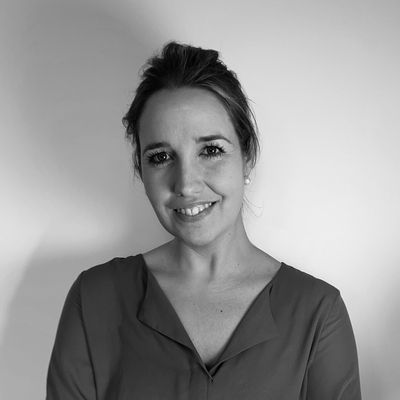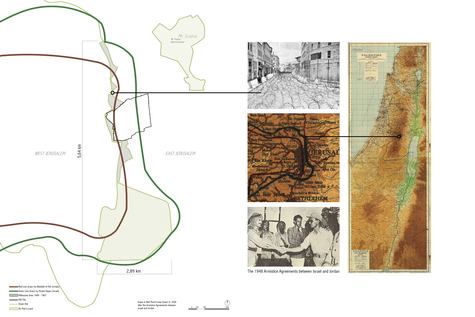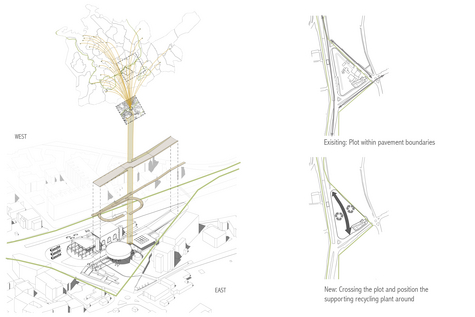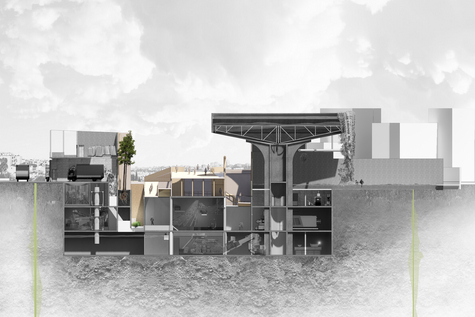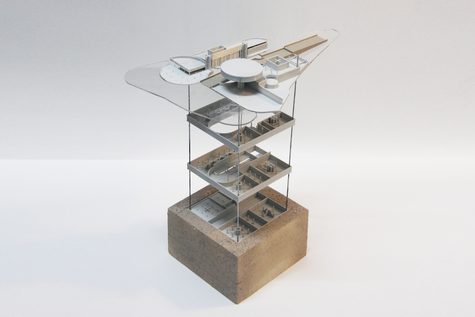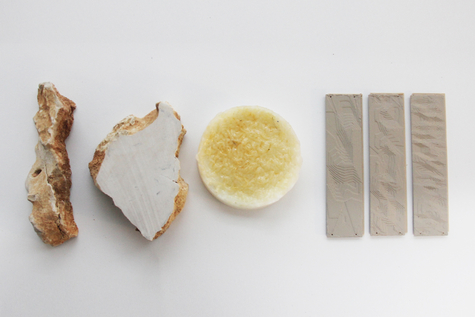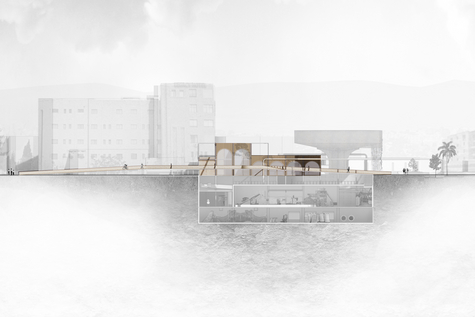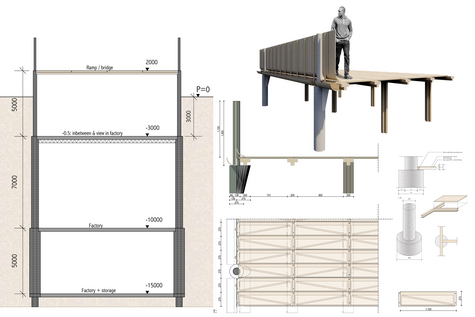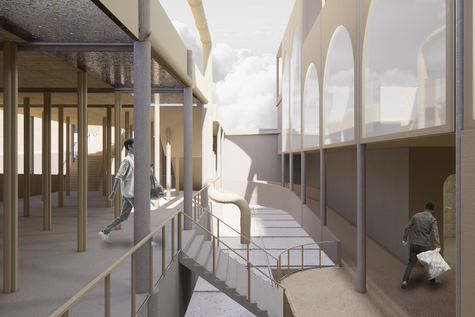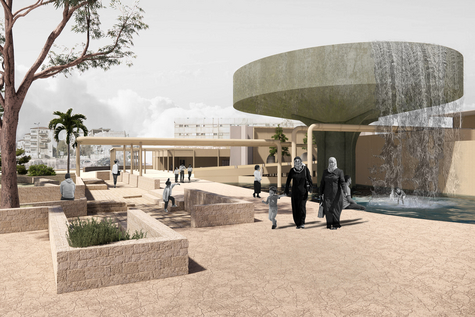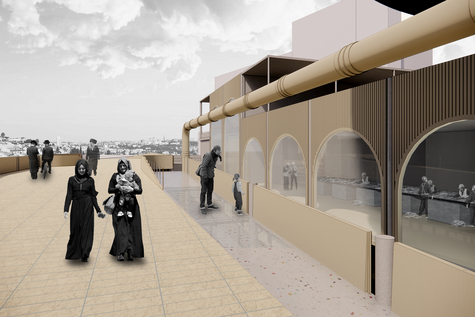Sharon Sportel
- Contact
- LinkedIn
In Between Green
Past, present and future of Jerusalem’s No-Man’s Land
Between the neighbourhoods of Musrara and Bab a-Zahara, north of Jerusalem's Old City, lies the In Between Green project. This recycling facility, folded around a new pedestrian route from the streetcar station to the bus station, uses urban themes in which the differences between East and West Jerusalem are visible. The resulting in-between area of the former Green Line becomes a gradient between the two neighbourhoods through that which still visibly divides on the edges of Jewish and Arab neighbourhoods: waste regulation in Jerusalem.
Differences at the neighbourhood borders of East and West Jerusalem are visible on a small scale with sometimes abrupt transitions, where the different neighbourhoods relate to each other as separate domains. Quality of landscape and public greenery, street hygiene and regulation of waste collection have a district division. This division is indicated on municipal maps serving maintenance and sanitation departments that, in many ways, correspond to the 1948 boundaries of the former Green Line and the area in between defined as No-Man's Land.
Using the former No-Man's Land as an intermediate area as a gradient between Musrara and Bab a-Zahara with a necessary regular need, it becomes a general place where no domain can form, and neighbourhood boundaries spill over into this intermediate area. The pedestrian bridge simultaneously becomes an intermediate station for recycling Jerusalem's plastic waste. Various plastics are processed into pure recyclate and serve as a facade finish not made of 60% obligatory Jerusalem Stone, but pure panels with a colour tone. Thus, municipal regulations for new construction do not additionally deplete limestone resources and yet Jerusalem's urban façade retains its light sand tones. The tactility of the plastic is in the texture and mass of the tiles on the pedestrian bridge, which also accompany the collection of rainwater in the winter months to the catch basin for waste cleaning processes.
The state owns and operates the recycling and water treatment plant, but transparently: users of the bridge to the bus station can choose to watch the process. The state also ensures equal distribution of plastic and water by fitting the architecture to the landscape and allowing gravity to participate ecologically and architecturally in care rather than suppression. Dirty city water is collected on the street side and, after treatment processes, discharges into the basin on the east side, the entrance to Bab a-Zahara. Users can choose to be involved in the process by depositing plastic waste in the semi-public section below the sorting areas. This section is closed to odour and noise for the sake of air and residential quality in the public space. The installation is deliberately visible between the two neighbourhoods, but operationally not experienced: the public space puts comfort first, and the machine adapts as such.
The state as waste and water treatment manager is imagined as a transparent and involved party amid social streams of use in Jerusalem. The state becomes both the bearer and provider and puts the transformation in the contested ground where the resource is transformed into an equal social good.
Graduation date: 25 October 2022
Graduation committee: Bart Bulter (mentor), Micha de Haas, Marc Schoonderbeek
Additional members for the exam: Wouter Kroeze, Daria Naugolnova
